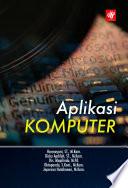The purpose of this book is to give new perspectives on how to teach English as a foreign language in Indonesia. English is one of the subjects taught in junior high school and senior high school which is based on the curriculum and syllabus determined by the government. The syllabus consists of the core competence, basic competence, objective, materials, methods, and evaluation. The subjects must contribute to the establishment of attitude, skills, and knowledge. This book is completed with something new: Curriculum 2013. The students of this subject are introduced with the history of language teaching, the spread of “Englishes”, and the concept of ENL, ESL, EFL, TEFL, TESL, and TESOL. The concept, the framework, and the standards in the new curriculum are also included in this book. In addition, the students are also introduced to scientific learning model such as thematic learning, discovery learning, and problem-based learning. Furthermore, the kinds of text as learning materials are also given. It is expected that upon completing this subject, the students are able to teach English as a foreign language in Indonesia using lesson plan based on the syllabus of curriculum 2013. The examples of syllabus and lesson plans used in teaching English for junior high school and senior high school are available in the appendix of this book.
The purpose of this book is to give new perspectives on how to teach English as a foreign language in Indonesia.










